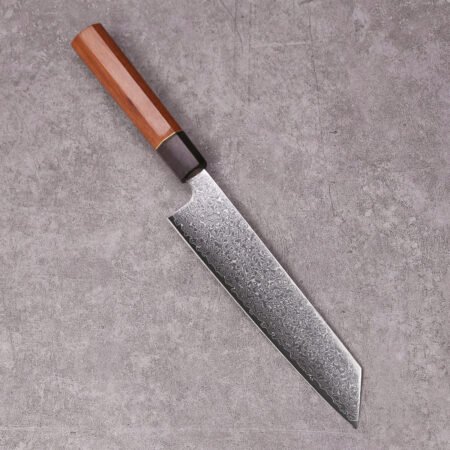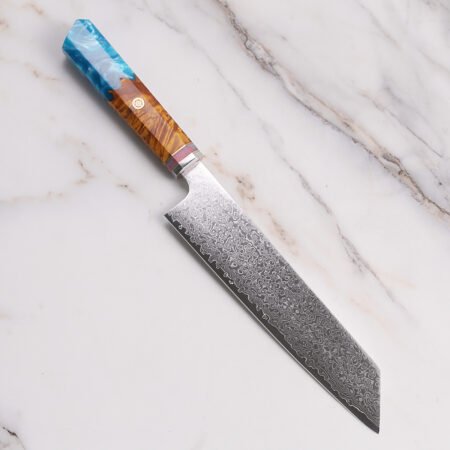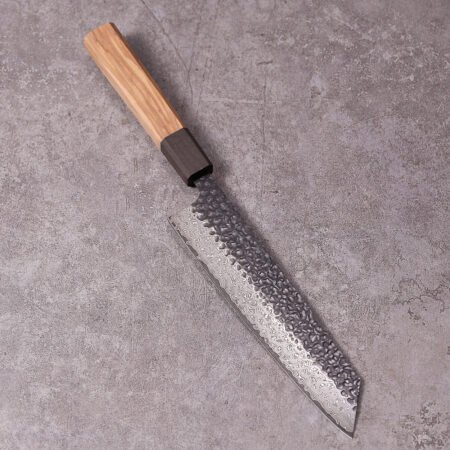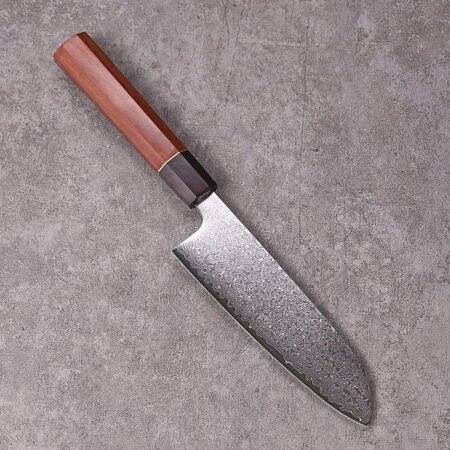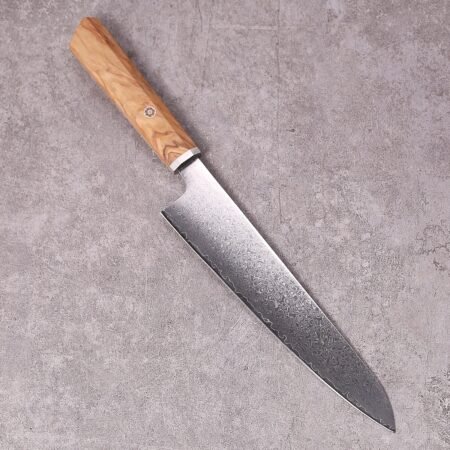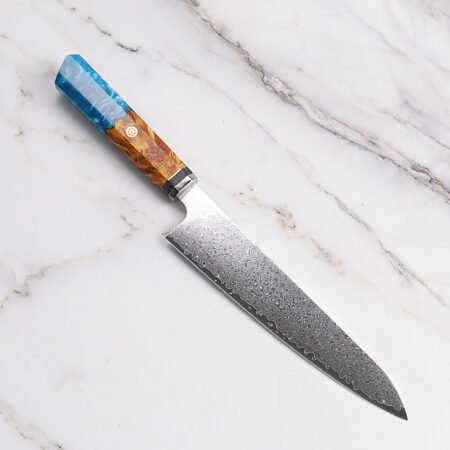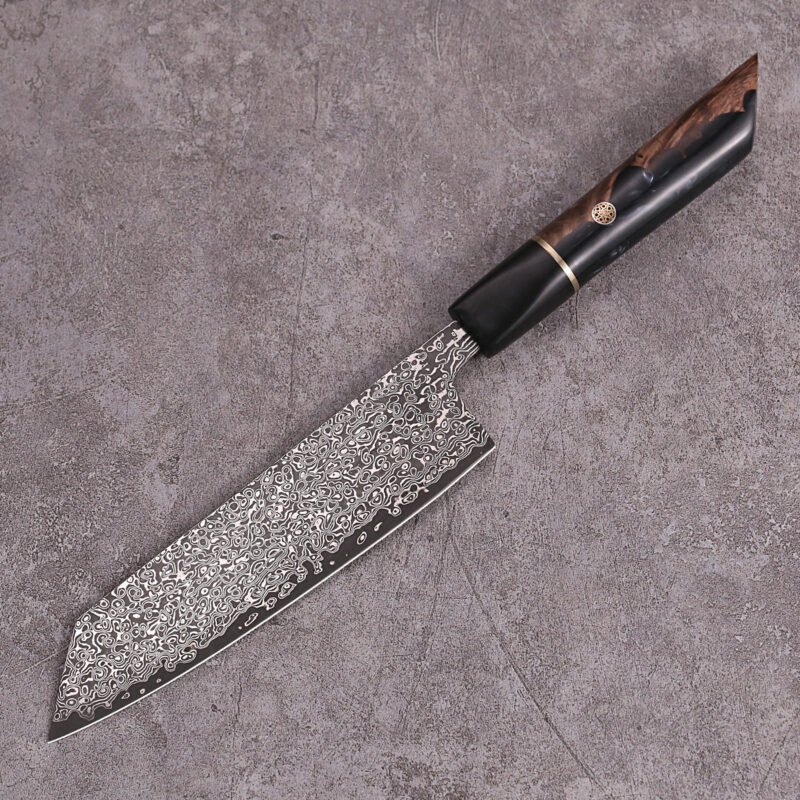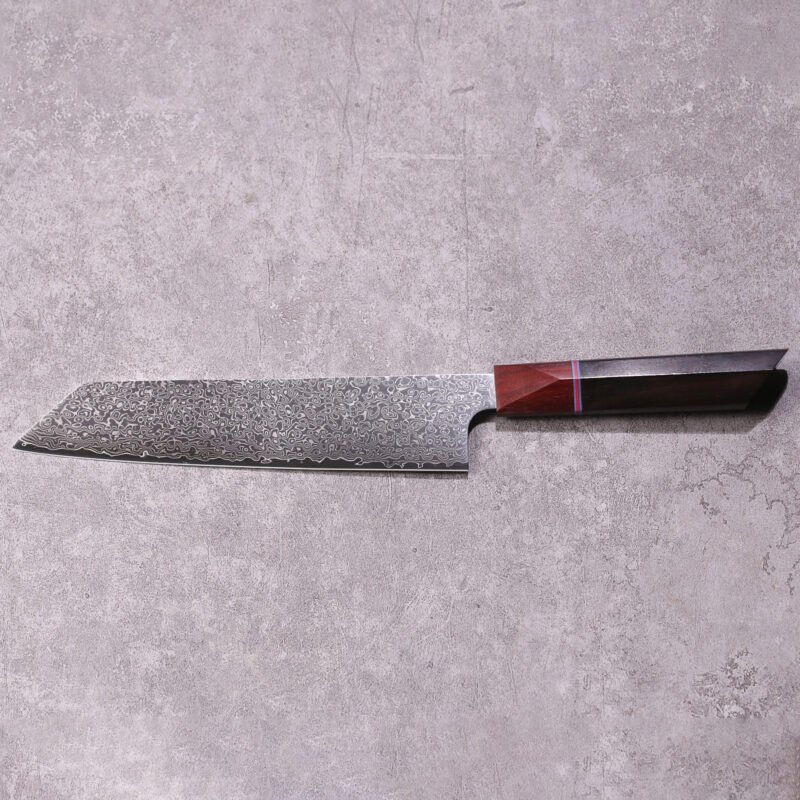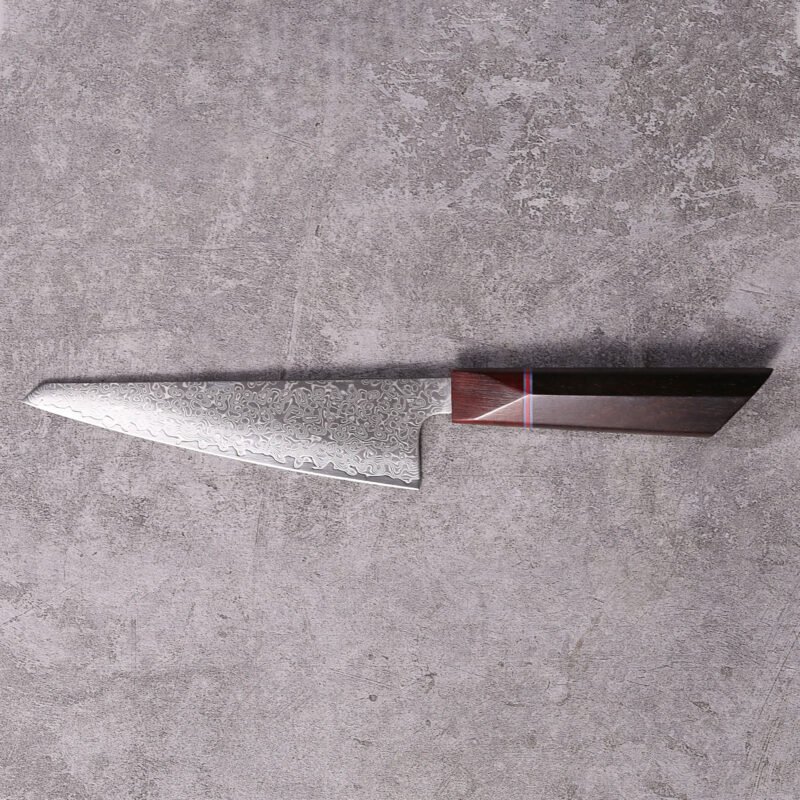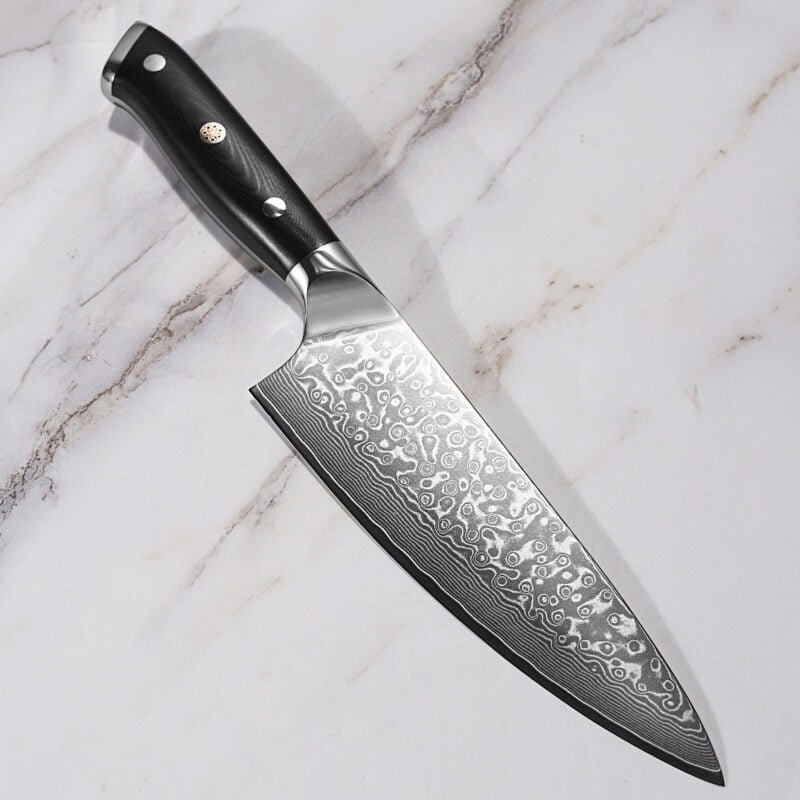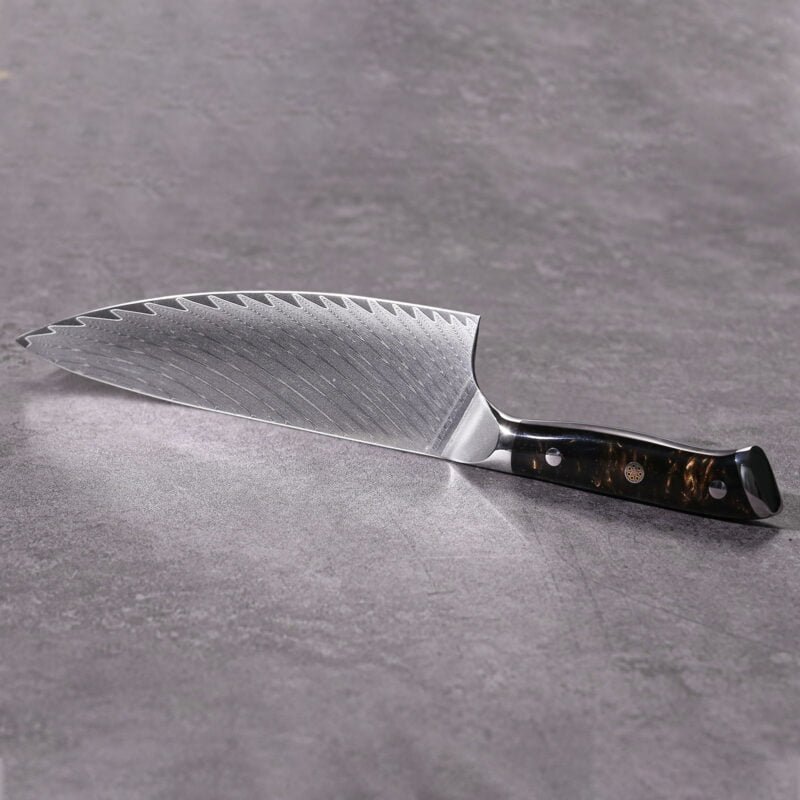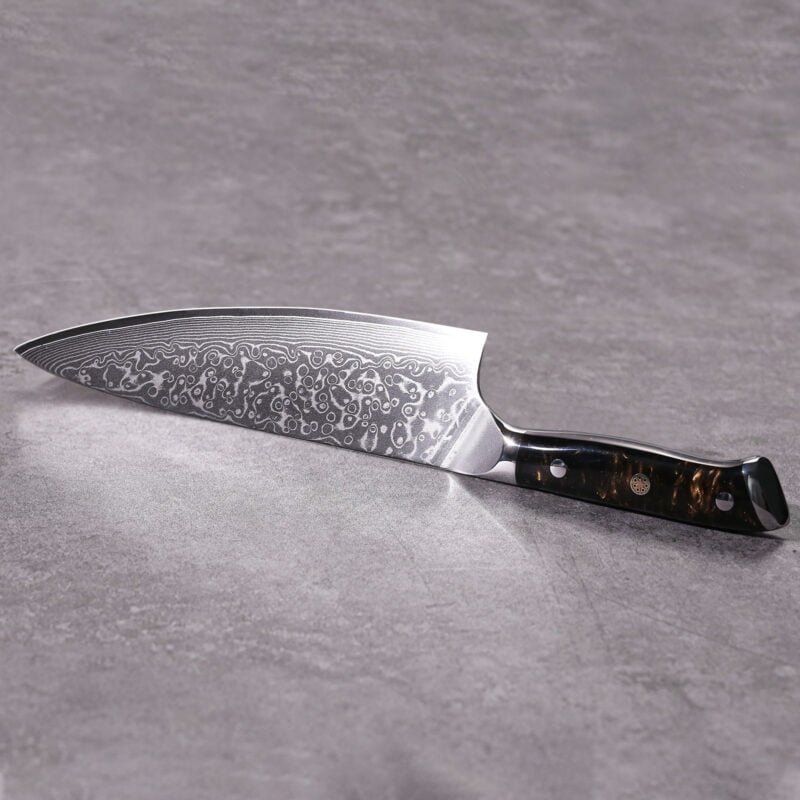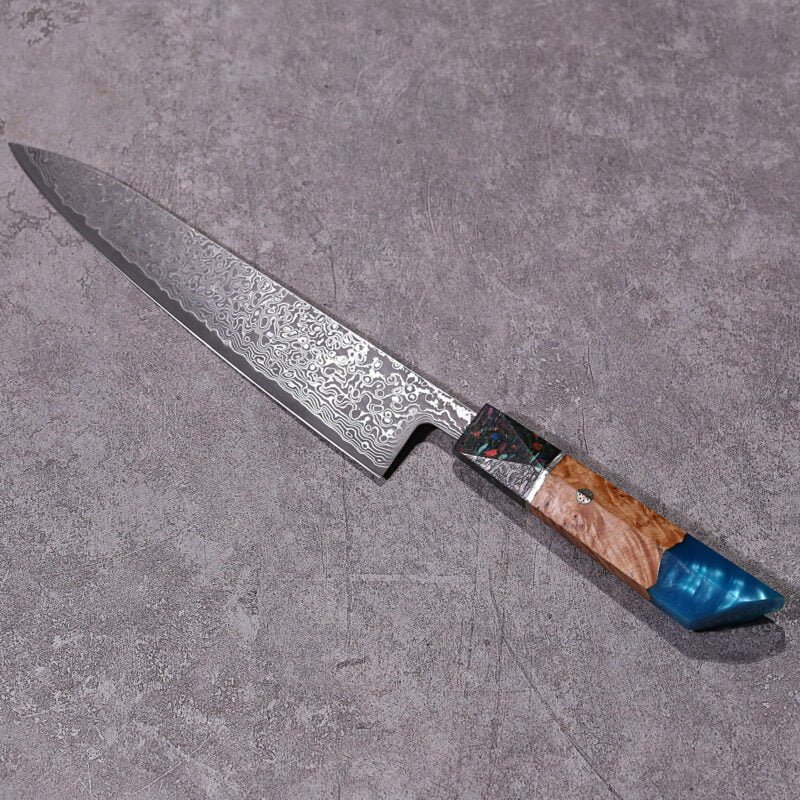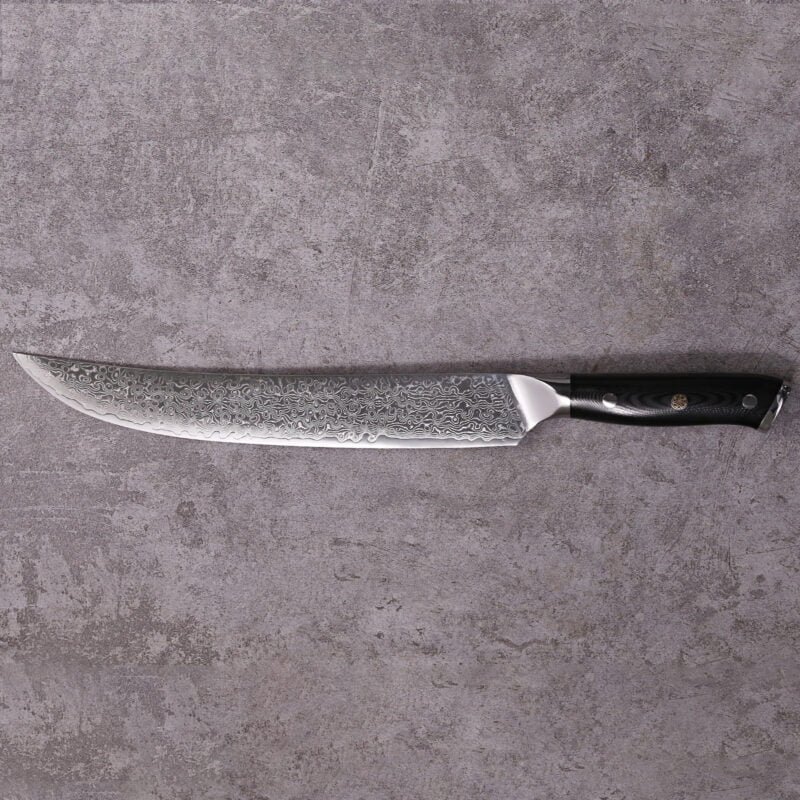The Best Japanese Knife: A Comprehensive Guide to Different Knife Types and Steel Comparison

Table of Contents
Best Japanese Knives
When it comes to kitchen knives, Japanese knives are renowned for their exceptional craftsmanship, sharpness, and durability. Whether you’re a professional chef or an enthusiastic home cook, investing in a high-quality Japanese knife can greatly enhance your culinary experience. In this guide, we will explore the different types of Japanese knives and compare the various types of steel used in their construction.
Types of Japanese Knives
Japanese knives come in a wide variety of shapes and sizes, each designed for specific tasks. Here are some of the most popular types:
1. Gyuto (Chef’s Knife)
The Gyuto is the Japanese equivalent of a Western chef’s knife. With its versatile design and sharp edge, it is perfect for slicing, dicing, and chopping a wide range of ingredients.
- The Gyuto knife is incredibly versatile and can handle a wide range of kitchen tasks. Its design allows for precision slicing, dicing, and chopping of various ingredients, including vegetables, fruits, meats, and fish. Whether you’re mincing herbs, portioning a roast, or finely slicing delicate ingredients, the Gyuto knife can handle it all.
- Ergonomics: Gyuto knives are typically designed with ergonomic handles that provide a comfortable and secure grip. This allows for better control and reduces fatigue during prolonged use. The handle shape and weight distribution are often optimized for a balanced and effortless cutting experience.
- Length and Blade Shape: Gyuto knives typically have a blade length ranging from 8 to 10 inches, making them suitable for both small and large cutting tasks. The blade shape features a gentle curve, allowing for a smooth rocking motion while cutting. This rocking motion is particularly beneficial when chopping herbs or performing slicing techniques.
- Professional-Grade Performance: Gyuto knives are often favored by professional chefs due to their exceptional performance. They are capable of meeting the rigorous demands of a professional kitchen, allowing chefs to work efficiently and achieve precise cuts for professional presentations.
2. Santoku
The Santoku knife is another multipurpose knife that excels at slicing, dicing, and mincing. It features a shorter, wider blade compared to the Gyuto, making it ideal for those who prefer a lighter and more nimble knife.
- Its design allows for slicing, dicing, and chopping a wide range of ingredients, including fruits, vegetables, meats, and fish. Whether you’re preparing stir-fries, slicing through root vegetables, or mincing herbs, the Santoku knife can handle it with ease.
- The Santoku knife features a shorter, wider blade compared to other knives, such as the Gyuto or chef’s knife. This design allows for efficient cutting and makes it easier to control the knife. The wider blade provides more surface area for contact with the cutting board, resulting in improved stability and reduced chances of food sticking to the blade.
- The Santoku knife typically has a flat edge with little to no belly (curvature). This design facilitates a slight rocking motion during chopping, allowing for a smooth and efficient cutting technique. The flat edge also makes it easier to achieve precise, straight cuts.

3. Nakiri
The Nakiri knife is specifically designed for precision vegetable work. Its thin, double-edged blade allows for precise and effortless chopping, slicing, and dicing of vegetables.
- The primary purpose of the nakiri knife is to prepare vegetables. Its straight-edged, rectangular blade allows for efficient and precise slicing and chopping motions. From delicate herbs to dense root vegetables, the nakiri knife can handle a wide range of vegetable types.
- The nakiri knife typically features a thin blade with a sharp edge. This design ensures clean and precise cuts, minimizing damage to the vegetable’s cellular structure. The sharpness of the blade reduces the likelihood of bruising or crushing the vegetables while cutting.
- The flat profile of the nakiri knife’s blade makes it well-suited for push-cutting techniques. It allows for efficient cutting motions, especially when slicing through larger vegetables like cabbage or melons. The flat blade also provides stability and control, making it easier to achieve uniform slices and dice.
4. Deba
The Deba knife is a heavy-duty knife primarily used for filleting and butchering fish. Its thick spine and sturdy blade make it perfect for tackling tough tasks like breaking down fish bones.
- The primary purpose of the deba knife is to fillet and butcher fish. Its thick and robust blade allows for precise and powerful cuts through fish bones, heads, and tough skin. The single bevel edge is designed to facilitate clean and smooth cuts, ensuring the fish is properly filleted with minimal wastage.
- The deba knife’s sturdy and thick spine makes it ideal for cutting through fish bones. It can be used to separate the bones from the flesh, trim away unwanted parts, and prepare bone-in fillets. The weight and strength of the deba knife enable it to handle the task effectively.
- Fish often have tough and slippery skin that requires careful removal. The deba knife’s sharp and strong blade can easily cut through the skin without slipping, allowing for precise skinning of the fish.
5. Petty
The petty knife, also known as a utility knife or a paring knife, is a versatile and handy tool commonly found in both professional and home kitchens.
- The petty knife usually features a narrow, straight blade with a pointed tip. This design allows for precise cutting and maneuverability, making it ideal for tasks that require delicate and detailed work.
- It excels at peeling and trimming fruits and vegetables, deveining shrimp, segmenting citrus, and other tasks that require precision and fine cutting. It is also suitable for slicing smaller ingredients like garlic or shallots.
- The compact size of the petty knife makes it easy to handle and control. It is lightweight and allows for intricate movements, making it suitable for tasks that require agility and finesse.
6. Yanagiba (Sushi Knife)
The Yanagiba knife is the go-to knife for sushi chefs. Its long, slender blade and single bevel edge enable precise slicing of raw fish for sashimi and sushi.
- Its long, thin blade allows for long, smooth strokes to produce thin, even slices of fish with minimal tearing or damage. The single bevel edge is designed to facilitate clean cuts and ensure the fish retains its shape and freshness.
- The Yanagiba knife has a single bevel edge, typically ground on the right side. This asymmetrical edge allows for precise control and enables the knife to cut through the fish with minimal resistance, resulting in clean, smooth slices.
- The Yanagiba knife is designed to preserve the delicate flavor and texture of raw fish. The sharpness and precision of the blade minimize damage to the fish fibers, allowing the slices to retain their integrity and enhance the dining experience.
- The Yanagiba knife is often used by professional chefs to create visually appealing sashimi presentations. Its ability to produce thin, uniform slices of fish allows for beautiful plating arrangements and showcases the natural colors and textures of the fish.
The Finish of the Knife Steel
- Mirror: Mirror finish refers to a highly polished and reflective surface on the blade of a knife. It is achieved through a meticulous process of grinding, buffing, and polishing the steel until it reaches a high level of smoothness and shine. The result is a blade that reflects light like a mirror, creating a sleek and elegant appearance.
- Satin: Satin finish is a popular type of finish for knife blades. It is achieved by using abrasive materials to create a smooth, matte, or semi-reflective surface on the blade. The satin finish is characterized by fine, parallel lines or a brushed appearance that gives the blade a subtle sheen.
- Tsuchime: Tsuchime is a hammered finish that creates small indentations on the blade’s surface. The hammered texture adds visual interest and can also help reduce friction during cutting.
- Damascus: Damascus refers to a patterned finish achieved through layering and folding different types of steel. It creates a visually stunning and unique pattern on the blade, often resembling flowing water or wood grain.
- Kasumi: Kasumi is a construction method rather than a specific finish. It involves layering a soft iron or stainless steel cladding over a harder carbon steel core. The resulting blade often showcases a beautiful contrast between the cladding and the core steel.
Steel Comparison
Japanese knives are known for their exceptional sharpness, and the type of steel used in their construction plays a significant role in achieving this. Here are some common types of steel used in Japanese knives:
1. Carbon Steel
Carbon steel is highly regarded for its ability to achieve and maintain a razor-sharp edge. It is known for its excellent edge retention and ease of sharpening. However, carbon steel knives require regular maintenance to prevent corrosion and discoloration.
2. Stainless Steel
Stainless steel knives are popular for their resistance to corrosion and ease of maintenance. They are less prone to staining and require less frequent sharpening compared to carbon steel knives. However, they may not hold their edge as well as carbon steel.
3. Damascus Steel
Damascus steel is a beautiful and highly sought-after type of steel used in Japanese knives. It is known for its distinctive wavy pattern and exceptional strength. Damascus steel knives offer a balance of sharpness, durability, and aesthetics.
Construction: Damascus steel knives typically consist of a core material, such as AUS-10, VG-10, or Gingami No.3, surrounded by layers of cladding material to form the distinctive Damascus patterns.
Strength and Beauty: The cladding not only enhances the visual appeal of the knife but also adds strength, making the blade more resistant to bending and breaking.
Versatility: Damascus steel’s versatility allows for a wide array of knife styles, from fixed blade knives to folding knives, each showcasing the unique patterns and characteristics of Damascus steel.
Craftsmanship: Crafting a Damascus steel knife involves carefully folding layers of steel together and heat-treating them to create a strong and resilient blade suitable for various tasks.
4. AUS-10 Steel
AUS-10 steel is a high-quality stainless steel known for its excellent edge retention and corrosion resistance. It is a popular choice among professional chefs and knife enthusiasts due to its superior performance.
Conclusion
Japanese knives are revered for their exceptional craftsmanship, sharpness, and durability. Whether you’re a professional chef or a passionate home cook, investing in the best Japanese knife can elevate your culinary skills and enhance your cooking experience. The wide variety of Japanese knife types, such as the versatile Gyuto, the precise Nakiri, and the specialized Yanagiba, ensures that there is a knife tailored to suit every culinary need.
When considering Japanese knives, the choice of steel is crucial. Carbon steel offers outstanding edge retention and ease of sharpening, although it requires regular maintenance. Stainless steel provides resistance to corrosion and ease of maintenance, albeit with potentially slightly lower edge retention. Damascus steel, with its unique wavy pattern and exceptional strength, combines sharpness, durability, and aesthetic appeal. AUS-10 steel stands out for its superior edge retention and corrosion resistance, making it a favorite among professionals and enthusiasts.
Ultimately, the best Japanese knife for you will depend on your specific preferences, cooking style, and maintenance routine. By selecting a high-quality Japanese knife that suits your needs, you can elevate your culinary creations and enjoy the precision and artistry that Japanese knives are renowned for.

